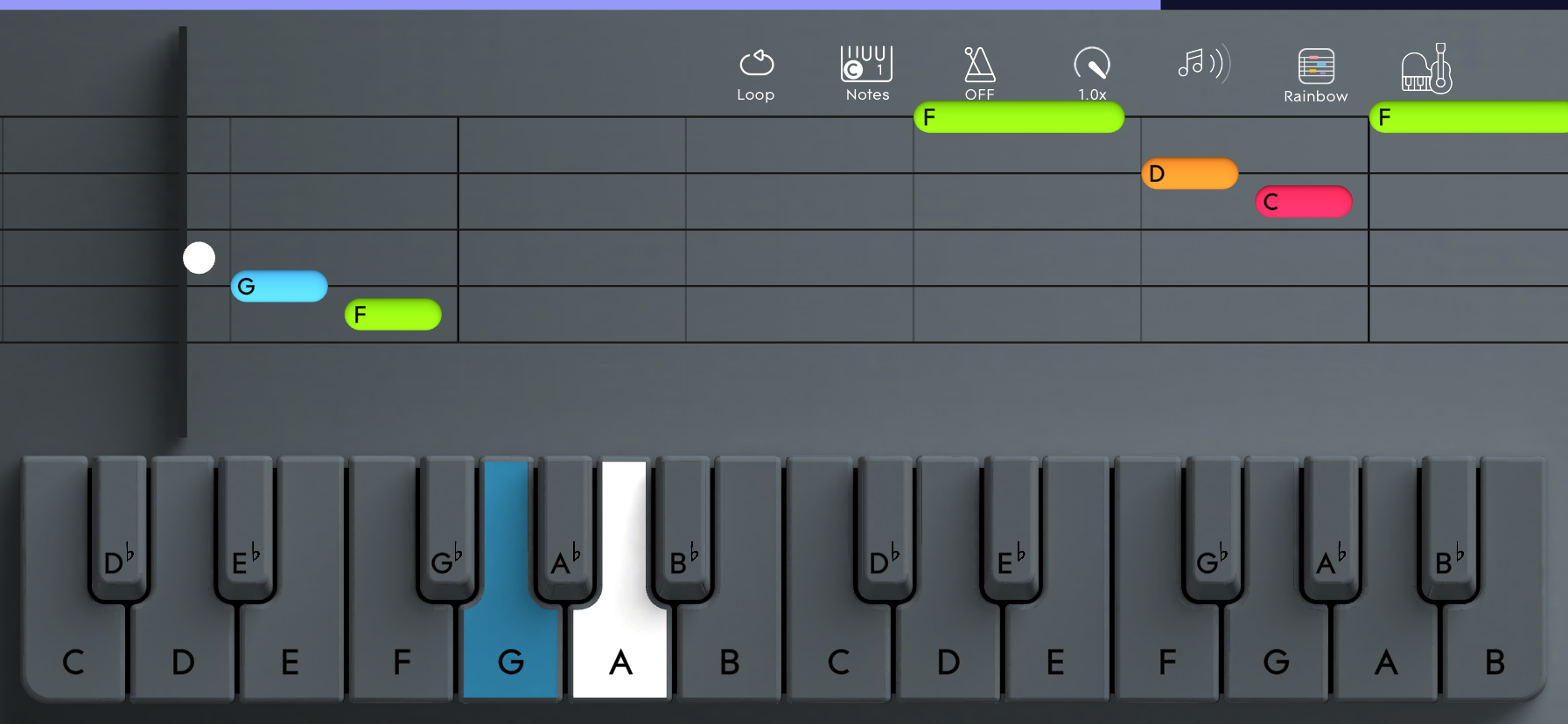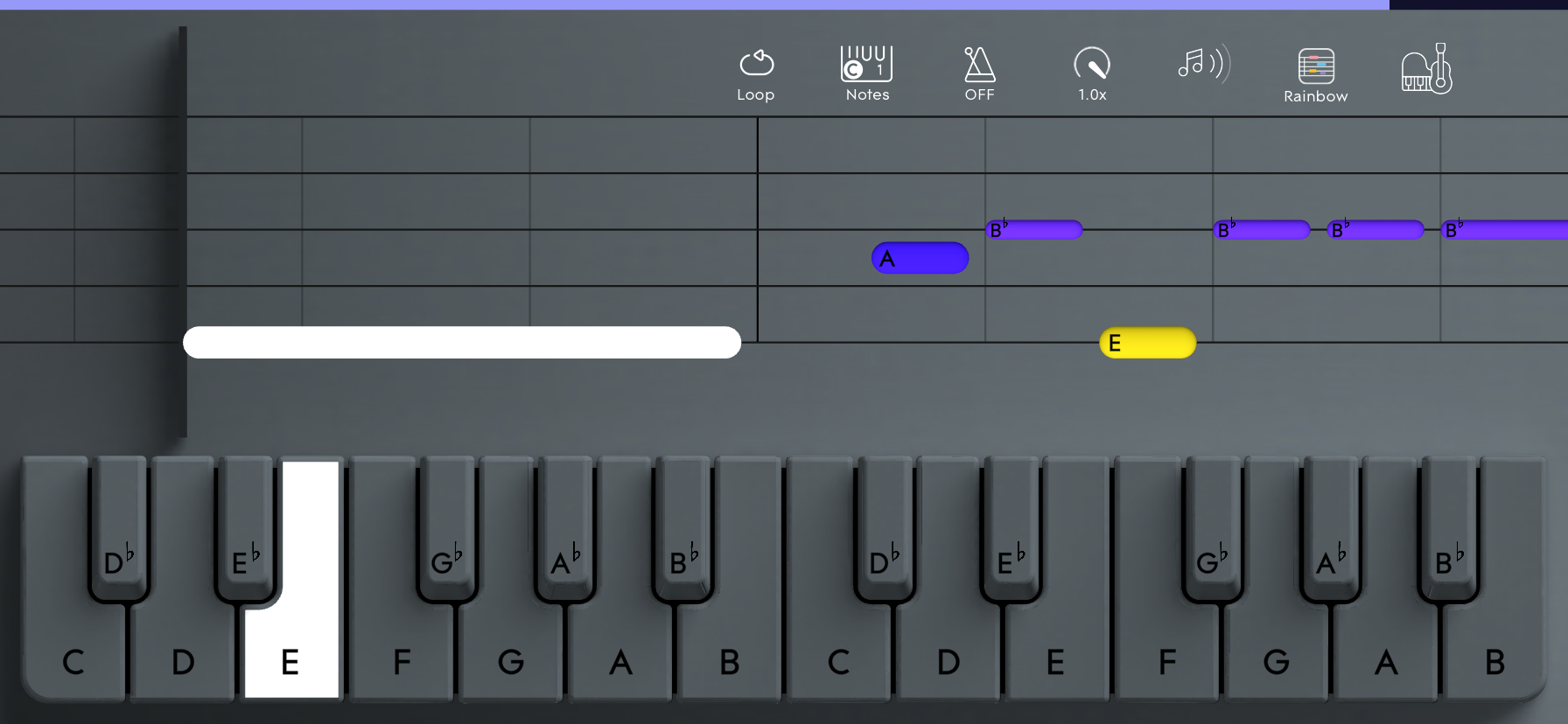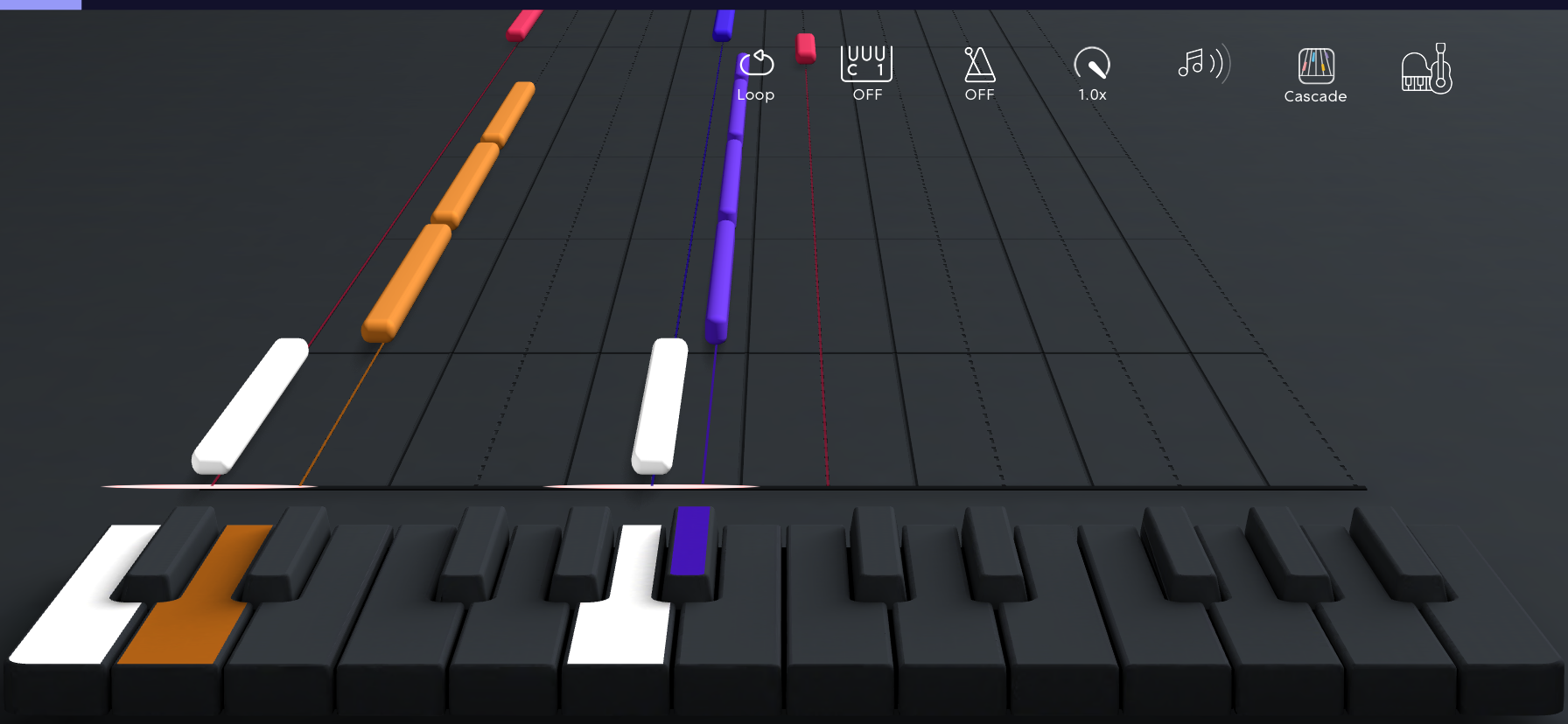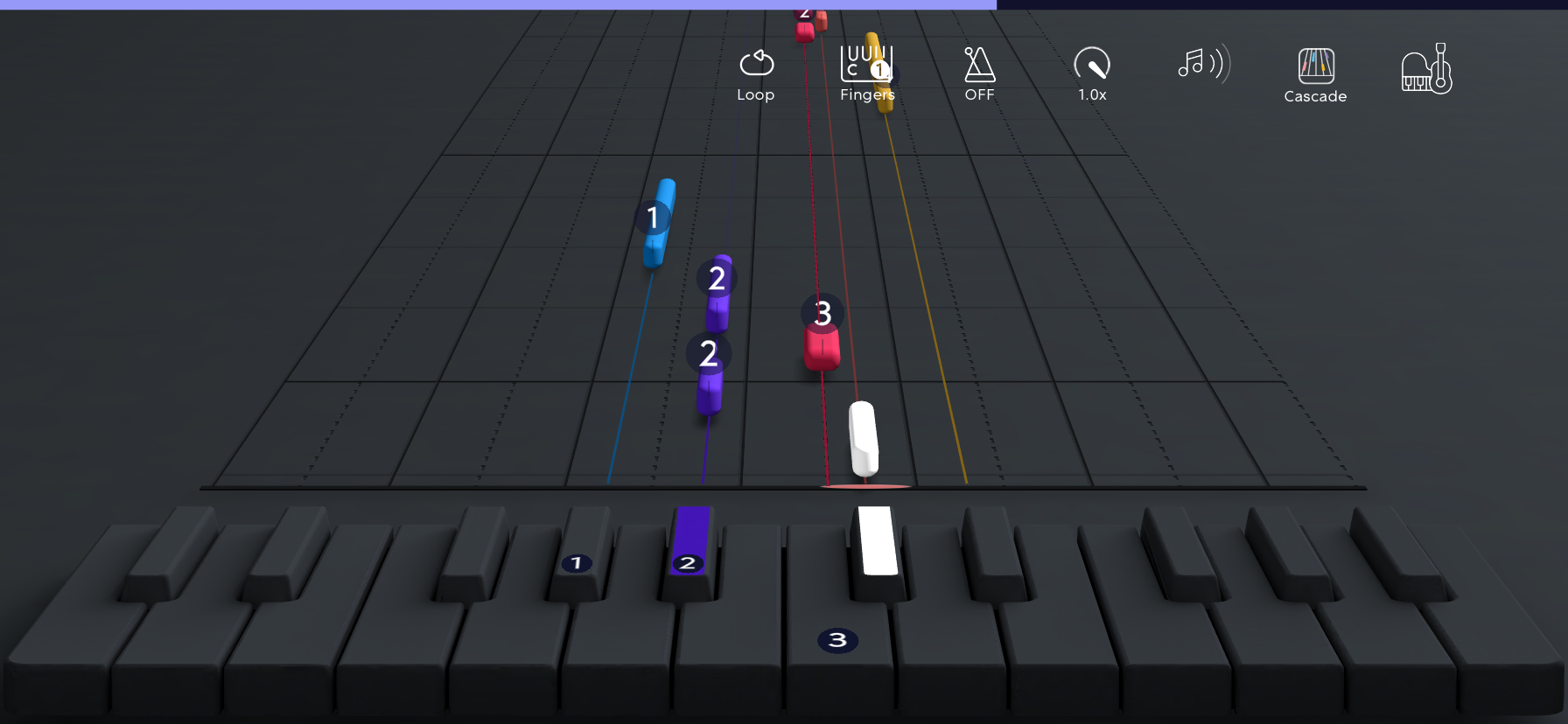Learn to play piano like Coldplay's Chris Martin
Celebrate Chris Martin's birthday with iconic Coldplay songs – available for you to learn and play in the ROLI Learn app!
"Nobody said it was easy, no one ever said it would be this hard
Oh, take me back to the start"
"The Scientist" from Coldplay’s 2002 album, A Rush of Blood to the Head
This is just one small set of seemingly endless, cherished lyrics brought to life by singer and pianist Chris Martin. Loss and grief of all shapes are felt more fully and worked through with the help of this music.
Coldplay’s piano-woven music also helps us embrace moments of celebration. From our bedrooms to stadiums, the five Londoners who make up Coldplay have held us in a beautiful space of equal dancing and crying for decades, and the music lives on.
In celebration of Chris Martin’s birthday on March 2nd, let’s take a moment to appreciate one of the most important musicians and bands at the turn of our century.
A brief history of Coldplay
After meeting at University College, London in 1988, Martin and guitarist Johnny Buckland compiled their core group who would later shape alternative music. Astoundingly, it took them less than two years to release a Grammy-winning album, their first entitled Parachutes in 2000. You may have cried to this music – and you would not be alone in that!
This ascension would come to the surprise of anyone who has joined a band or tried to learn an instrument, as "making it big" is not quite a realistic goal for a first record. Yet Coldplay achieved it, championed by Martin’s vocals and expressive composition of piano-centered songs.
In the years following, Coldplay released eight additional full-length studio albums which would continue to define contemporary popular music.
For anyone learning the piano, Coldplay can serve as a centerpiece of that journey, from basic melodies and chord progressions to jams which could rock thousands.
Interested in more about Coldplay’s history? Enjoy this living timeline which you can also contribute to with your own memories and stories!
How to play piano like Chris Martin
Chris Martin is a role model to many for his vocals, but his piano playing is crucial to the combination of his stage presence. Fortunately, as put eloquently by a Redditor asking how good Martin is on piano, many consider his compositions to be fairly simple. Or in some unfortunate cases, unusual.
At the end of the day, the piano is an extension to Martin, a part of the equation which makes him and the band so engaging. If you’ve ever learned an instrument, you know that there are certain songs which everyone learns when becoming comfortable. Once the basic musical concepts are learned, out comes "Eight Days a Week" for the guitarists to learn their basic open chords.
The piano tends to include a number of classical pieces rather than rock, but Coldplay can make its case as one of the best for leveling up from beginner. Here’s how you can get started and play piano like Chris Martin.
Learning Coldplay songs with the ROLI Learn App
If you’re already learning with ROLI, you’ll notice that there are different ways to learn depending on your mood each day. This could be games, formal lessons, and over 500songs with a range of difficulty.
This includes six beloved Coldplay songs:
Clocks** (2002)
The Scientist** (2002)
Viva La Vida (2008)
Paradise** (2011)
Everglow (2016)
Something Just Like This** (2017) – You’ll notice this song as the bold collaboration with the Chainsmokers, which dominated the charts. Be sure to discover the storybehind that track as you learn it.
**Indicates that a Quick Play version is also available
The above songs transverse generations of Coldplay’s success and will assist your ability to play strong melodies with your right hand, foundational rhythm with your left hand, and if you want, sing along.
Essential piano fundamentals: "The Scientist"
Learning the "bones" or core elements of these hits can also provide you with the space to play and experiment. The most basic versions focus on simple chords or playing what is sung by Chris Martin, whereas more advanced playthroughs allow you to feel like your left hand and right hand have become the entire band. And as you learn, you will begin to identify what you like about certain chords and intervals used.

By intervals, we mean the space between two notes, which you can see showcased in the "Cascade" view within the ROLI Learn app above. These are one of the four options of reading music including traditional sheet music.
These "spaces" between notes can evoke certain emotions in the listener. This is one of the most powerful aspects of learning music by artists we look up to: we can identify, musically, why we like these artists so much. And as you learn and perhaps begin to write music, you can take that as inspiration for what your sound becomes.

For example, take this moment towards the end of "The Scientist." This accidental note of B flat, which is sung by Chris Martin, is the first time we hear this note in the entire song. It’s a powerful, yet subtle addition leaving us wanting more right at the end of the song.

Don’t forget, you can learn these songs on piano at varying difficulties with different learning views. Here is the intro to "The Scientist" with the Cascade view, the first notation you learn with LUMI. We've done this to help un-do some of those intimidating musical concepts like sheet music.
Essential piano fundamentals: "Clocks"
This track differs in that, being in F minor, it relies on a lot of accidentals. Most of the notes we learn to play are sharps or flats, which follow along with Chris Martin’s melody and one of the most iconic piano intros of all time simplified to single notes.

The more you learn piano through the music you connect with, the better you will be able to express yourself. By beginning with these "quick play" and early learning song versions, you can become more comfortable with hand coordination, finger position, and rhythm with the songs you love. And remember – while today we celebrate Coldplay, their music is less than 1% of the songs available to you through the LUMI App.
Don’t forget to watch Coldplay live
Coldplay as a group might have ascended quickly to stardom, but that has not stopped them from also putting on some of the most forward-thinking live shows. Dating back to the breakup of Pink Floyd and their legendary live sound/lighting design, the world of alternative and rock was waiting for the next can’t-miss live shows.
Not only "I need to see this artist live" but instead, I need to see this production that they’ve put together with my own eyes. Coldplay infamously did this by handing every audience member at their gigs LED wristbands, which were programmed to become a part of the light show. With many of these gigs in enclosed, often impersonal feeling arenas, the band made the audience a part of the stage.
This approach is reflective of the overall energy and desire for connection that the band brings to live performance. As we learn piano from the artists we love, also watching how they perform it live can help keep us motivated, give us new ideas for playing styles, and grow our overall love for the instrument.
Pick up the keys today!
We wish Chris a wonderful birthday, and that he never stops making music for us to cry to, and learn on the piano. Superstars who champion the piano need not be virtuosos – it’s all about giving a voice to the music inside you. While the piano chords and lead sections might be seemingly complex to play, you'll quickly find it's more accessible than you think.
If you’ve read this far and haven’t yet started to learn, we invite you to do so with LUMI. Whether your goal is to learn a favorite intro of a whole song, our Coldplay songs and broader library of piano classics are here for you.
"Confusion never stops
Closin' walls and tickin' clocks gonna
Come back and take you home
I could not stop, that you now know, singin'"
"Clocks" from Coldplay’s 2002 album, A Rush of Blood to the Head
Join the ROLI community